






The Government of Western Australia acknowledges the traditional owners and custodians throughout Western Australia and their continuing connection to the land, waters and community. We pay our respects to all members of the Aboriginal and Torres Strait Islander communities and their cultures, and to Elders past and present.
Western Australia’s goal is to be a global renewable energy powerhouse, and we are working to position this State at the forefront of Australia’s clean energy future.
As an important first step, we are investing in our renewable energy assets and modernising our electricity grids.
The global race to decarbonise is the most significant economic transformation in decades and presents an enormous opportunity for Australia’s growth and transition to a net zero future.
During this important time, ensuring Western Australia is globally competitive will be key to realising the economic benefits of this emerging opportunity. The benefits of the transition include increased investment, regional job creation, export revenue, and economic diversification.
We are committed to producing renewable hydrogen at scale for our future prosperity and supporting the decarbonisation goals of our regional partners. We are focussed on capturing more economic benefits onshore by adding value to our resources by using renewable hydrogen to produce green ammonia and decarbonise minerals processing. The production of green iron is seen as a particularly exciting opportunity for our State.
Since the release of our first Renewable Hydrogen Strategy in 2019, we have made significant investment in developing the State’s renewable hydrogen industry. This includes the Renewable Hydrogen Fund, co-investment in Hydrogen Hubs, and, more recently, the Strategic Industries and Investment Attraction Funds.
We are speeding up approvals on jobcreating projects and supporting continuous improvement in environmental, social and governance outcomes for Western Australia. In particular, there is a key opportunity to share the value of this emerging industry with regional and Aboriginal communities.
This Renewable Hydrogen Strategy outlines our goals, priority actions, and targets to support our emerging renewable hydrogen industry and using renewable hydrogen to decarbonise our priority sectors. We will continue to work with our key trading partners to foster international partnerships, attract investment and support the decarbonisation of their economies.
I look forward to working with all stakeholders, including industry, our regional and Aboriginal communities, and the Australian Government to deliver a net zero future.
Hon Roger Cook MLA Premier; Minister for State and Industry Development, Jobs and Trade
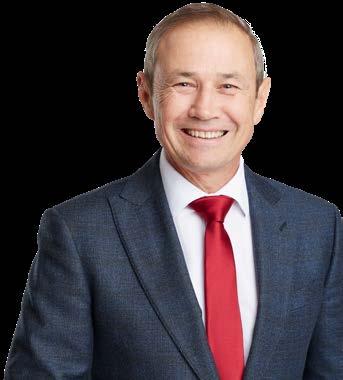
Western Australia will be a leading producer, user, and exporter of renewable hydrogen, products and technologies, enabling local and global decarbonisation
Production
Significant investment in supporting infrastructure for renewable hydrogen
Use
Significant investment in decarbonisation of priority sectors using renewable hydrogen Export
Skilled and productive workforce
Environmental, social and governance frameworks
Investment and trade ecosystem
Science, innovation, and technology
Advanced manufacturing capabilities
Key infrastructure and project-ready land
Policy and regulatory frameworks
Aboriginal empowerment
WA is Australia’s largest exporter of renewable hydrogen products and technologies
Targeted support for strategically important projects in green ammonia, green metals, and minerals processing, including critical minerals, in Kwinana, and the Pilbara, Mid West and South West regions
Invest in infrastructure and activation of hydrogen hubs and Strategic Industrial Areas in Kwinana, and the Pilbara, and Mid West regions
Increase clarity and efficiency with approvals
Strengthen relationships with domestic and international partners
Empower Aboriginal people

Western Australia’s vision is to become a leading producer, user and exporter of renewable hydrogen, products and technologies, enabling local and global decarbonisation.
Our goal is for Western Australia to be a clean energy powerhouse. As an important first step, we are partnering with the private sector to invest in renewable energy infrastructure and facilitate regulatory approvals for renewable generation projects. Developing a new renewable hydrogen industry, combined with our established resources sector, will provide opportunities to deliver long-term sustainable economic benefits for our State.
As Western Australia moves towards decarbonising our economy, we are prioritising the highest impact end-uses of renewable hydrogen in hard-to-abate sectors, enabling sectorspecific decarbonisation that brings our State the most benefit. We are supporting the production and export of high-value renewable hydrogen products such as green ammonia, green metals, and renewable hydrogen to facilitate local and global industry decarbonisation.
This refreshed Western Australian Renewable Hydrogen Strategy (the Strategy) is underpinned by the Western Australian Climate Policy and the State’s Sectoral Emissions Reduction Strategy (SERS), which outline pathways and priority actions for the State’s transition to net zero emissions.
The Strategy focuses on developing Western Australia’s renewable hydrogen industry as one of nine targeted sector-specific diversification opportunities outlined in Future State: Accelerating Diversify WA (Future State).
The Strategy incorporates feedback from industry, research and education bodies, and community members received through a range of consultation mechanisms including an industry roundtable, interviews, and review of more than 60 written submissions. Stakeholder feedback sought an increased focus on approvals, infrastructure and land, market incentives, delivering value for regional communities and Aboriginal people and refreshed goals and targets for Western Australia leading up to 2030.


Why renewable Hydrogen?
Western Australia’s competitive advantages
Developing Western Australia’s renewable hydrogen industry
Developing hydrogen hubs
Investment to support Western Australia’s renewable hydrogen industry
Activating the economy to support the energy transition
The global renewable hydrogen economy is developing quickly as countries seek to maximise benefits arising from new industry development.
This Strategy is focused on renewable hydrogen, signalling where Western Australia will ultimately have the strongest advantage. However, it recognises the fast pace of technology change and that there may be new developments in low emissions hydrogen production and extraction of natural hydrogen.
Renewable hydrogen can enable Western Australia to harness new economic opportunities to decarbonise the production of ammonia and has the potential to support local production of green iron, green alumina and other value added critical mineral products.
With the capacity to replace fossil fuel sources in energy intensive industries, and with the appropriate social licence of regional communities, renewable hydrogen is emerging as an integral component of global efforts to decarbonise, particularly in hard-to-abate sectors that are difficult to electrify with current technologies.
Renewable hydrogen can be used:
» To decarbonise existing industries such as in mining and minerals processing.
» As a chemical feedstock in industrial processes, and as a high-temperature heat source.
» As a fuel in the transport sector including, maritime, aviation and longhaul road transport.
Renewable hydrogen also has potential applications as a form of long-duration energy storage and grid balancing, particularly in extreme climates and difficult locations.
Renewable hydrogen is defined as hydrogen produced using energy generated from renewable sources such as the sun and wind.
One pathway to produce renewable hydrogen is to power an electrolyser with renewable energy sources to convert water into hydrogen gas, through a process called electrolysis.
Renewable hydrogen releases close to zero carbon emissions.
Figure 2: The benefits of renewable hydrogen in Western Australia
Decarbonise
Contributing to economy-wide netzero targets, and sector-specific decarbonisation

Creating new industries, whilst strengthening energy security
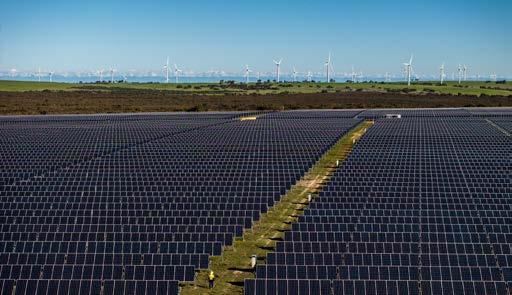
Western Australia has abundant renewable energy resources and offers the world a unique set of strengths and capabilities to become a global powerhouse to fuel the energy transition.
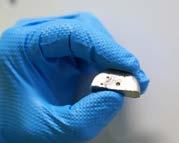


Western Australia is the largest iron ore supplier in the world and is a globally significant producer and processor of many critical minerals essential for the energy transition. Green mineral products can be ethically produced with high environmental, social and governance (ESG) standards.
Green iron. CREDIT: Fortescue
With a track record of delivering successful major resource projects and a proven capability to develop globally competitive supply chains, Western Australian companies are experienced in building big projects.
Western Australia has a technically skilled workforce with expertise across the energy, resources and minerals sector, with transferable skills and capabilities required by the renewable hydrogen industry.
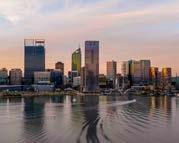
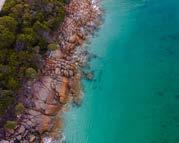


Western Australia offers a stable investment environment with low sovereign risk, governed by strong democratic institutions and free market rules, and robust and transparent regulatory frameworks, ensuring projects meet high environmental, social and governance (ESG) standards. Western Australian projects provide a low-risk option as part of a diversified global portfolio.
With a landmass of 2.5 million square kilometres (onethird of the Australian continent), more than 12,000 kilometres of coastline, Western Australia is home to some of the best solar, wind, tidal and wave resources in the world. Subject to respectful engagement with associated stakeholders, there is land available to develop large-scale projects.
Western Australian companies, universities and research institutions are actively involved in world-leading research across hydrogen domestic and export value chains. Western Australian innovation and automation in the mining and resources sector has seen significant productivity gains.
Positioned at the gateway to the Indo-Pacific region near Asia’s growing economies, Western Australia is ideally located to participate in global networks with trade partners including Japan, South Korea, Singapore, and China, helping them decarbonise their economies.
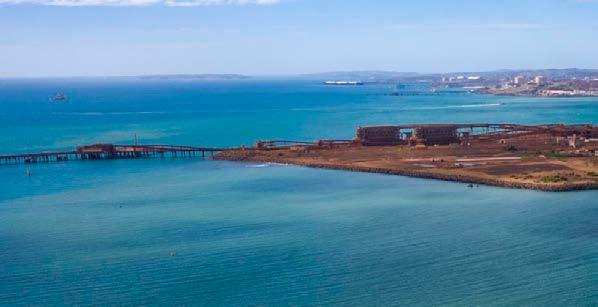
Continuing market activation is critical for the State to become a globally competitive hydrogen producer and investment destination.
The hydrogen landscape has been significantly altered over the last five years through changes in national and international policy settings, as well as advancements in technology.
While the global hydrogen economy is predicted to grow over the coming decades, the complexities of the developing hydrogen industry and increasing international competition mean not all projects are likely to be realised.
The growth in global decarbonisation has led to increasing pressure from various international jurisdictions to boost hydrogen production capability. For example, the United States’ Inflation Reduction Act (2022) offers ambitious support through renewable electricity and hydrogen production credits to generate investment in domestic hydrogen production. Other international jurisdictions including Japan, South Korea, and the European Union are also increasing incentives to stimulate growth in the development of their hydrogen industries.
Aligning with Australian Government initiatives is critical for Western Australia to become a leader in producing renewable hydrogen and green metals. We are doing this through ongoing collaboration with the Australian Government and aligning our Strategy with the National Hydrogen Strategy. We continue supporting Australian Government initiatives, including a Future Made in Australia, Hydrogen Headstart, the Hydrogen Production Tax Incentive, and Rewiring the Nation to transform our economy, create jobs, and attract investment to our State and in the national interest.
Western Australia has made strong progress in developing a renewable hydrogen industry, including a commitment of almost $200 million, attracting more than 30 current and planned hydrogen projects, and achieving the four goals outlined in the previous Strategy.
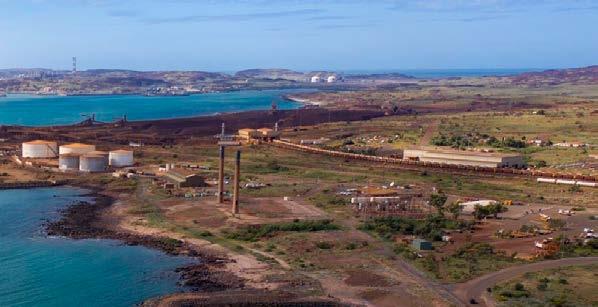
The Strategy builds on the momentum to date and positions Western Australia in the rapidly evolving global renewable hydrogen market. It incorporates a level of monitoring and flexibility to adapt to continued developments over the years, and incorporates actions relating to supporting research development and demonstration of renewable hydrogen and green metals technologies.
The goals referenced throughout the Strategy refer to the term ‘significant investment’, which includes existing investment by the Western Australian Government and attracting new investment from the Australian Government, the private sector and international investors.
Notable advances have occurred in understanding the technical and commercial feasibility of renewable hydrogen production and use since the release of the 2019 Strategy. To reflect this shift, the goals in the Strategy replace the 2030 goals listed in the previous Strategy.
Western Australia is on the edge of a transformational economic opportunity to accelerate the development of renewable energy infrastructure, enabling the growth of our emerging renewable hydrogen and green metals industries. We are a reliable trading partner with low sovereign risk and political stability and offer a secure investment destination.
We aim to become a clean energy powerhouse, playing a key role in supporting our global partners in decarbonising their economies.

To ensure a thriving hydrogen industry, the entire hydrogen value chain must be considered. Community, industry, and government each have a role in fulfilling Western Australia’s renewable hydrogen potential and can each benefit from this new industry.
Government support and industry facilitation aims to be flexible as the market changes, promoting the renewable hydrogen industry’s ability to scale up and return benefits to Western Australia.
Key industry enablers are crucial for the efficient, sustainable, and equitable development of our renewable hydrogen industry. We are committed to delivering economic, social, and environmental benefits to the Western Australian community, including engaging and partnering with Aboriginal people, reflecting the importance of collaboration in developing renewable hydrogen projects.
Skilled and productive workforce
Environmental, social and governance frameworks
Investment and trade ecosystem
Science, innovation, and technology
Advanced manufacturing capabilities
Key infrastructure and project-ready land
Policy and regulatory frameworks
Aboriginal empowerment
5: The renewable hydrogen value chain
Renewable energy source
Electricity generation/ transmission
Hydrogen production
Hydrogen transport and distribution
Hydrogen storage systems - tanks - pressure vessels - pipelines
Domestic and export markets
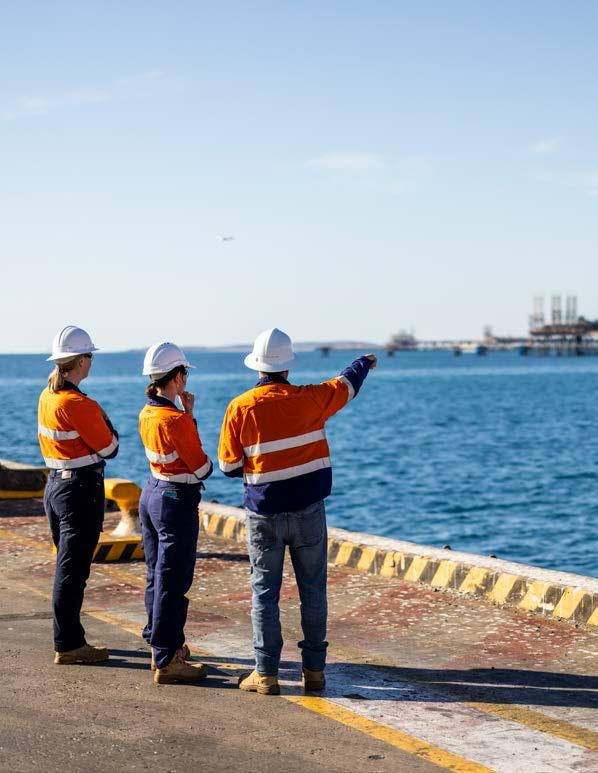
The Western Australian Government is prioritising the development of a renewable hydrogen industry to align with the States key priorities to decarbonise and diversify our economy.
The economic modelling in Figure 4 illustrates three scenarios whereby a strong renewable hydrogen industry could lead to significant economic growth in Western Australia.
A Western Australia renewable hydrogen industry could add between 2,300 and 7,600 additional jobs to the Western Australia economy per year, on average, across three different scenarios.
A WA renewable hydrogen industry could add between 2,300 and 7,600 additional the WA economy per year, on average, across three different scenarios.
employment each year (000’s FTEs)
Optimistic scenario
Optimistic average
$19 bn added to the WA economy
Conservative scenario
A scenario where a low proportion of proposed projects proceed to development, approximated by the proportion of proposed hydrogen projects worldwide currently at the ‘committed’ stage.

$40 bn added to the WA economy
Balanced scenario
average
$66 bn added to the WA economy
Optimistic $19 bn added to the WA economy1
$40 bn added to the WA economy1
A scenario where a proportion of proposed projects proceed to development, approximated by the proportion of proposed hydrogen investment worldwide currently at the ‘committed’ stage.
$66 bn added to the WA economy1
Optimistic scenario
A scenario where a high proportion of proposed projects proceed to development, in line with industry-wide benchmarks for major projects across Australia.
A scenario where a high proportion of proposed projects proceed to development, industry-wide benchmarks for major projects across Australia. Optimistic scenario
Figure 4: Modelling conducted by Deloitte on renewable hydrogen’s potential impact in Western Australia (February 2024)
Project status (End July 2024)
Under development
Under development
Study completed
Study completed
Under construction
Under construction
Over 30 current and planned hydrogen projects demonstrate Western Australia’s potential as a large-scale producer of renewable hydrogen.
Operating
Operating
Hydrogen Hub
Hydrogen Hub
Multiple sites and/or regions
Multiple sites and/or regions
Project status (End July 2024)
Project status (End July 2024)
Under development
Study completed
Under construction
Operating
Hydrogen Hub
Multiple sites and/or regions
Mid West Hydrogen Hub
Mid West Hydrogen Hub
Oakajee Strategic Industrial Area Land Allocation Proponents
Oakajee Strategic Industrial Area Land Allocation Proponents
BP
BP
Geraldton Export-Scale Renewable Investment
Geraldton Export-Scale Renewable Investment
Fortescue Energy
Fortescue Energy
Oakajee Green Hydrogen Hub
Oakajee Green Hydrogen Hub
Copenhagen Infrastructure Partners
Copenhagen Infrastructure Partners
Oakajee Green Hydrogen Project
Oakajee Green Hydrogen Project
Green LOHC
Green LOHC
Liquid Organic Hydrogen Carrier (LOHC) demonstration project
Liquid Organic Hydrogen Carrier (LOHC) demonstration project
Kinara Power
Kinara Power
Project Astra
Project Astra
Blue Diamond Australia (Phoenix Blasting Services)
Blue Diamond Australia (Phoenix Blasting Services)
Project Terra
Project Terra
Hub
Commercial
Commercial
Demonstration Plant
Demonstration Plant
Geraldton Export-Scale Renewable Investment
Fortescue Energy
Oakajee Green Hydrogen Hub
Copenhagen Infrastructure Partners
Oakajee Green Hydrogen Project
Green LOHC
Liquid
Kinara Power
Project Astra
Blue Diamond
Project Terra
Refer to the QR code for an overview of the projects
Woodside Energy Hydrogen Blending Project ATCO
Hazer Group Limited
Woodside Energy Hydrogen Blending Project ATCO
Hazer Group Limited
H2Perth
H2Perth
Hydrogen Refueller @H2Perth
Hydrogen Refueller
@H2Perth
Woodside Energy
Woodside Energy
H2Kwinana
bp Australia
H2Kwinana bp Australia
Project status (End July 2024) Preparing
POSCO Australia
Yuri Renewable Hydrogen to Ammonia Project ENGIE / Yara Pilbara Fertiliser
Hydrogen Refueller Station ATCO
Hydrogen (P-AGH)
Hazer Group Green Hydrogen for the City of Cockburn City of Cockburn Hydrogen Refueller Station ATCO
Boolantha Project
Renewable Hydrogen Transport Hub in the City of Mandurah
Renewable Hydrogen Transport Hub in the City of Mandurah
Hazer Group Green Hydrogen for the City of Cockburn City of Cockburn
Province Resources
Australian BP, InterContinental Arrowsmith
Gascoyne Green Energy Parmelia Green APA Group,
Mid West Hydrogen Hub Oakajee Energy Oakajee Energ HyEnergy Project
Australian Renewable Energy Hub
BP, InterContinental Energy, CWP Global
POSCO Australia Green Hydrogen (P-AGH) Project POSCO
Yuri Renewable Hydrogen to Ammonia Project ENGIE / Yara Pilbara Fertiliser Pilbara Hydrogen Hub
Compressed Hydrogen Export Project Provaris Energy
Boolantha Project Gascoyne Green Energy
HyEnergy Project Province Resources
Ord Hydrogen Feasibility Study Pacific Hydro Australia Developments
Hyer Penetration Energy Developments Limited East Kimberley Clean Energy Project Various proponents
Hybrid PV-Battery-Hydrogen System for Microgrids Murdoch University
Christmas Creek Green Iron Trial Commercial Plant
Christmas Creek Renewable Hydrogen Mobility Project Fortescue Energy
Denham Hydrogen Microgrid Demonstration Project Horizon Power
Preparing the Dampier to Bunbury Natural Gas Pipeline for Hydrogen Dampier Bunbury Pipeline
Murchison Hydrogen Renewables Project Murchison Hydrogen Renewables
Mid West Hydrogen Hub
Kwinana Hydrogen Hub
Oakajee Energy Green Hydrogen and Ammonia Export Project Oakajee Energy
Arrowsmith Hydrogen Project Infinite Green Energy
Parmelia Green Hydrogen Project APA Group, Wesfarmers
MEG-HP1 Project Infinite Green Energy
See inset
Feasibility of Renewable Hydrogen to Decarbonise the Esperance Region Horizon Power
Western Green Energy Hub InterContinental Energy, CWP Global, Mirning Green Energy Limited
South East
Western Australia Hub Fortescue Energy
Hydrogen hubs are locations where producers, users and exporters of renewable hydrogen are co-located to improve competitiveness and attract investment through the coordination of multiuser infrastructure.
Strategic Industrial Areas (SIAs) are industrial land areas designed for investment in downstream processing and other heavy or strategic industrial activities.
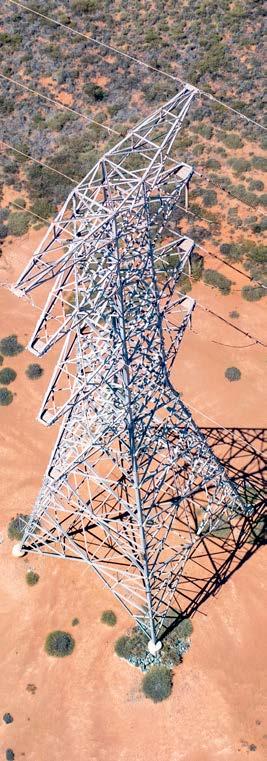
Through industry and government coordination, extensive work is underway to develop hydrogen hubs in the Pilbara, Mid West and Kwinana including the activation of Strategic Industrial Areas.
$140 million
$70 million each from the Australian and Western Australian Governments to build the Pilbara Hydrogen Hub, a major future centre for renewable hydrogen production and export.
$60 million
Western Australian Government investment in preliminary works to advance the Mid West Hydrogen Hub, including works around Oakajee Strategic Industrial Area to leverage private sector investment and employment outcomes in an area renowned for wind resources and potential for magnetite resource development.
$70 million
committed by the Australian Government for H2Kwinana in the Kwinana Strategic Industrial Area, with the aim to support the established industry to decarbonise and support renewable hydrogen domestic offtake.
The construction and operation of the hydrogen hubs is expected to create thousands of jobs during construction and generate significant economic benefits for regional communities.
SIA Port
Anketell SIA
Dampier
Maitland SIA
Ashburton SIA
Ashburton
Boodarie SIA
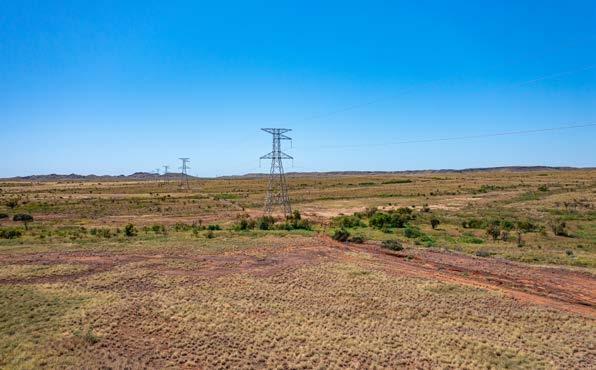
The Western Australian and Australian Governments have committed $5.4 billion to support the energy transition, including through new generation, transmission and storage across Western Australia’s major electricity networks—the South West Interconnected System and North West Interconnected System.
In August 2023, the Australian Government announced that up to $3 billion of concessional finance and equity investments from the Rewiring the Nation initiative would be made available to Western Australia through the Clean Energy Finance Corporation. The Rewiring the Nation deal will bolster Western Australia’s energy security by expanding and modernising electricity grids in the northern and south west parts of the State. In the first instance, Rewiring the Nation is expected to primarily support projects in the Pilbara to increase the provision of common-user transmission for renewable energy, providing cleaner, affordable and more reliable energy into the future, and enabling major industries to electrify and decarbonise their operations.
To coordinate actions needed in delivering electricity infrastructure required to decarbonise the South West Interconnected System, in 2023 the Western Australian Government established a new government entity called PoweringWA. A key role of PoweringWA is to engage closely with industry and communities to understand their needs, coordinate government processes, and ensure the delivery of electricity infrastructure is efficient, and effective and mitigates impacts.
Map Key
Strategic Industrial Area
Ports
Major roads
Regional Features
Hydrogen Hub
Wind
Solar
Iron ore
Critical minerals
Education institution
Refer to the QR code for an overview of the Strategic Industrial Areas.
The Western Australian Government has committed almost $200 million in developing the State’s renewable hydrogen industry.

Hydrogen Refueller, Jandakot, Western Australia. CREDIT: ATCO
2022 Goals - achieved
Approved a project to export renewable hydrogen from Western Australia.
Renewable hydrogen is being used in a remote location in Western Australia. Renewable hydrogen is being distributed in a Western Australian gas network.
A refuelling facility for hydrogen vehicles is available in Western Australia.
Grant programs
» $12.72 million Investment Attraction Fund grants for renewable hydrogen projects.
» $15 million Renewable Hydrogen Fund for feasibility studies and capital work projects.
» $10 million Hydrogen Fuelled Transport Program.
Resourcing
Hydrogen and New Energies Team was established in 2022.
Green Energy Approvals team was established in 2023 to accelerate green project development and ensure proponents, stakeholders, and agencies receive decisions in a timely manner.
A Coordinator General was appointed in 2024 to enhance environmental approvals by accelerating regulatory reforms and improving cross-agency collaboration.
$500 million Strategic Industries Fund
to deliver common user and other enabling infrastructure at Strategic Industrial Areas across the State.
$160 million of industrial lease incentives
to attract large-scale clean energy projects in the Anketell, Boodarie, Maitland, Mungari, Oakajee, and Shotts Strategic Industrial Areas.
$200 million
to unlock strategic industrial land and attract new industries to the Collie region.
$100 million commitment
to develop critical mineral common-user processing facilities to enhance Australia’s processing capacity, sovereign capability, and economic resilience.
$44.3 million
investment in approvals reform to streamline and speed up approvals for job-creating projects.
$74 million
to further Western Australia’s net zero ambitions as part of our Sectoral Emissions Reduction Strategy (SERS).
$60 million
Investment Attraction Fund to support new energies industries projects.
Western Australia can become a major producer of renewable hydrogen, and a premier destination for hydrogen investment.
Western Australia has the potential to be a leading destination for investment in hydrogen by providing reliable, low-cost renewable energy and minimising constraints for project development and construction.
Hydrogen hubs can be integrated into complementary low-carbon sectors, enabling the sustainable and responsible large-scale production of renewable hydrogen. Additionally, these hubs can support and promote the growth of green metals and critical minerals production areas.
Significant investment in supporting infrastructure for renewable hydrogen.
Renewable hydrogen production commences at scale in Western Australia by 2030.
The Western Australian Government is committed to:
» Regional planning coordination for land and infrastructure development.
» Support for hydrogen hubs in Kwinana, and the Pilbara and Mid West regions.
» Ongoing support for streamlining green energy project approvals and ongoing coordination with national green energy policy initiatives.
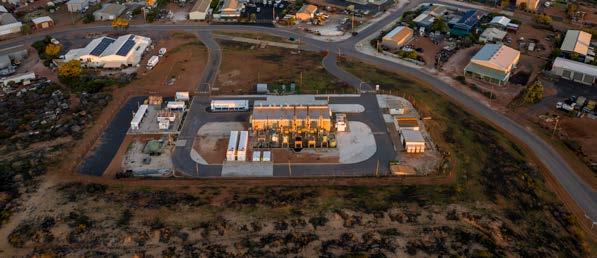
» Increase clarity and efficiency with approvals through the work of the Green Energy Approvals team and the Coordinator General to deliver faster environmental approvals for renewable hydrogen projects.
» Invest in infrastructure and activation of hubs and Strategic Industrial Areas (SIAs) in Kwinana, and the Pilbara, Mid West and South West regions:
Fast-track and reduce barriers to entry for large-scale renewable hydrogen, green metal production, critical minerals processing and renewable energy projects through the Strategic Industries Fund and Industrial Lease Incentive.
Work with hydrogen hub proponents and the Australian Government on advancing the three hydrogen hubs and work with the Australian Government to leverage co-investment and support for common user infrastructure relating to the hydrogen hubs.
Collaborate across government and the private sector on new and upgraded electricity transmission networks to enable the connection of large-scale renewable energy generation.
Investigate water resources and wastewater management requirements to support sustainable hydrogen production in hydrogen hubs.
Deliver the Western Australian Hydrogen and Renewable Energy Ports Strategy.
» Support Australian Government initiatives including a Future Made in Australia, Hydrogen Headstart, Rewiring the Nation, and work with industry on the Australian Government’s Hydrogen Production Tax Incentive.
» Provide targeted financial support, including through the State’s Investment Attraction Fund.
» Work with the Invest and Trade Western Australia Global Network to identify international customers and attract investment into Western Australian projects.
Use Western Australia adopts a targeted approach to using renewable hydrogen to decarbonise the State, which focusses on green ammonia, metals, and minerals processing.
Renewable hydrogen can play a role in Western Australia in the targeted decarbonisation of end-uses which are otherwise difficult to abate.
Western Australia’s public and private sectors can prioritise the highest impact end-uses of renewable hydrogen, to ensure resources are used effectively and decarbonisation benefits are maximised. The priority sectors outlined in Figure 6 provide an overview of
how likely renewable hydrogen could be used to abate carbon-intensive processes in Western Australia. The viability and feasibility of the hydrogen applications reduce as you move down the ladder.
Continued research and development can be supported to expand the potential applications – and lower the user cost of renewable hydrogen.
Figure 6: Priority sectors for hydrogen-based processes in Western Australia 1 * Electricity uses are likely to be limited to long duration storage and grid balancing.
Alumina Minerals processing Marine transport Aviation
* Heavy freight, long-haul transport Cement
Future applications for renewable hydrogen and its uses that align with the State’s competitive advantages may evolve as the industry develops and technology matures.
1. Amended from Grattan Institute, Hydrogen: Hype, hope or hard work? report (3 December 2023), Grattan Institute website. www.grattan.edu.au/report/hydrogen-hype-hope-or-hard-work

Significant investment in decarbonisation of priority sectors using renewable hydrogen. Goal
A project is approved for the large-scale use of renewable hydrogen in green metals or green ammonia by 2028. Target
The Western Australian Government is actively supporting:
» Investment in studies and pilot projects on hydrogen demand.
» Guidance for the safe storage, handling and production of hydrogen.
» Public-private collaboration on green ammonia and renewable hydrogen transport end-uses such as heavy freight, long-haul and shipping.
» Targeted support for strategically important projects in green ammonia, green metals, and critical minerals in Kwinana, and the Pilbara, Mid West and South West regions.
» Collaborate with organisations to develop a green metals research, development and demonstration pilot facility in Western Australia.
» Investigate using renewable hydrogen in critical mineral processing.
» Support demand generation for renewable hydrogen within the hubs by investigating opportunities for the aviation and shipping sectors, for example a ship-to-ship trial for ammonia.
» Investigate and develop a business case for the national Hydrogen Highways program.

Christmas Creek Mobility and Green Iron Project.

Western Australia is uniquely positioned to support Australia’s aspirations to become a world leader in the production and export of green metals.
As the largest iron ore producer in the world, and a leading supplier of critical minerals, Western Australia is focusing our efforts on using renewable hydrogen to produce green metals and process minerals essential for the energy transition.
We are collaborating with organisations to develop a green metals research, development, and demonstration pilot facility in Western Australia, while also investigating the use of renewable hydrogen in mineral processing and providing targeted support for strategically important projects in green ammonia, green metals, and critical minerals across Kwinana, and the Pilbara, Mid West, and South West regions.
Western Australia is working with key trading partners looking to diversify and de-risk their critical mineral supply chains, including those seeking access to less carbon-intensive mineral products. Western Australia is a reliable place to invest and has a long history of major mining and mineral processing success. The State offers investors a stable investment environment, a robust and transparent regulatory approvals system, access to key export markets and low barriers to international trade.
The reference to green metals in this Strategy aligns with the Australian Government’s a Future Made in Australia initiative comprising of green iron, green steel, green alumina, and green aluminium. Critical mineral processing aligns with Western Australia’s Battery and Critical Minerals Strategy with the opportunity to use renewable hydrogen in the downstream processing of Western Australia’s critical minerals.
Western Australia is well-placed to capture a significant share of the global export market for renewable hydrogen, and green products made using renewable hydrogen.
Western Australia is a leading energy and resource exporter with strong international trading partnerships. Western Australia is uniquely positioned to expand into the emerging export market for hydrogen products made using renewable hydrogen, such as green ammonia, and green metals, including iron. We are committed to producing renewable hydrogen at scale for our future prosperity and supporting the decarbonisation goals of our regional partners.
Western Australia is Australia’s largest exporter of renewable hydrogen, hydrogen products and technologies. Goal
An off-take agreement for renewable hydrogen products is secured for international export by 2030. Target
The Western Australian Government is actively supporting:
» Global trade and investment offices to facilitate export of hydrogen products, technologies and services.
» Regional port and infrastructure planning to enable the energy transition.
» Investment Attraction Fund and Renewable Hydrogen Fund to support the development of export industries for renewable hydrogen other energy carriers such as ammonia.
» Strengthen relationships with domestic and international partners by:
Working with the Australian Government through our Invest and Trade Western Australia Global Network to foster international partnerships, attract investment and promote diversified and ethical supply chains.
Delivering on our existing agreements and developing new agreements with strategic partners.
» Continue to support the Australian Government’s Guarantee of Origin Certificate scheme.
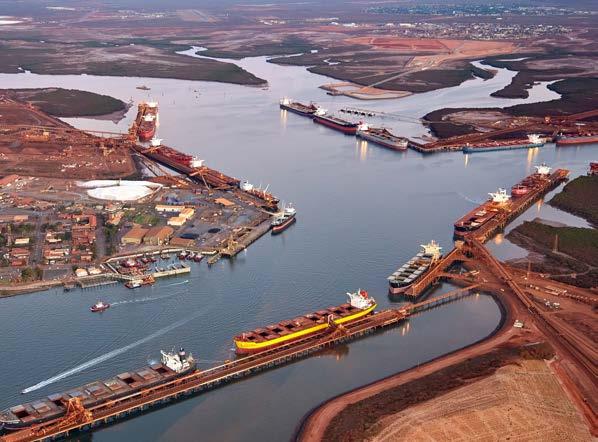
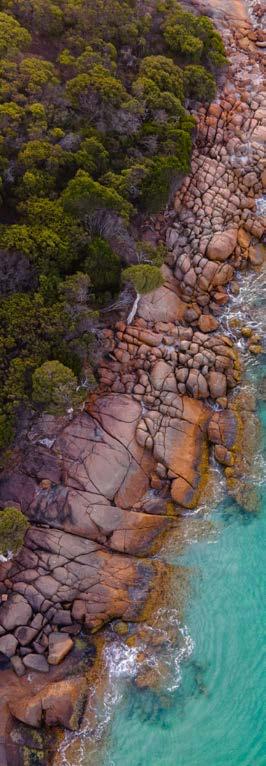
The Western Australian Government is strengthening our international partnerships by fostering collaboration and exploring renewable energy supply chain opportunities with our existing and new trade partners.
Trade missions to Japan, South Korea, Singapore, Germany, and the Netherlands have enabled the Western Australian Government to strengthen our international partnerships. The Western Australian Government has formalised several partnerships to foster collaboration and explore renewable energy supply chain opportunities.
A partnership between the Western Australian Government, the Netherlands’ Port of Rotterdam, and the German Federal Ministry for Education and Research (BMBF) on a study into fast tracking hydrogen exports from the Oakajee SIA in the Mid West.
A Memorandum of Understanding (MOU) between the Western Australian Government and the Republic of Korea’s Ministry of Trade, Industry, and Energy (MOTIE), to enhance cooperation between the Western Australian Government and MOTIE in the areas of clean energy development and processing.
An MOU between the Western Australian Government and the Japan Bank for International Cooperation (JBIC) focusing on hydrogen, ammonia, low emission technology and decarbonisation.
An MOU between Pilbara Ports Authority and Japan’s Port of Himeji to boost renewable energy trade opportunities between Western Australia and Japan.
An MOU between the State of Western Australia and the Japan Organization for Metals and Energy Security (JOGMEC) to strengthen the cooperation in the field of energy resources including hydrogen.
The Strategy is underpinned by seven economic enablers identified in Future State, and a new enabler Aboriginal Empowerment, reflecting the importance of collaboration with Aboriginal people in developing renewable hydrogen projects.
The enablers seek to ensure the renewable hydrogen industry develops efficiently, sustainably, and equitably, and delivers economic, social, and environmental benefits to the Western Australian community.
Western Australia is a leading energy and resource exporter with strong international trading partnerships. Western Australia is uniquely positioned to expand into the emerging export market for hydrogen products made using renewable hydrogen, such as green ammonia, and green metals such as iron. We are committed to producing renewable hydrogen at scale for our future prosperity and supporting the decarbonisation goals of our regional partners.
Identify and facilitate land approvals for renewable energy to support renewable hydrogen projects by 2027.
A renewable hydrogen project is approved in collaboration with Aboriginal people by 2028.
» Common-use infrastructure, project ready land in our Strategic Industrial Areas and approvals reform.
» Attracting talent and upskilling our workforce, delivering on our science, innovation and technology strategy and advancing our manufacturing capabilities
» Building social license for renewable energy, renewable hydrogen production and use.
» Best-practice engagement and partnerships between government, industry and Aboriginal communities, including early and ongoing engagement based on the principles of free, prior and informed consent.
Actions to support this pillar:
» Support Aboriginal people to self-determine the cultural and economic outcomes through Western Australia’s Aboriginal Empowerment Strategy.
» Work across government, the private sector and with Traditional Owners to identify and facilitate land access approvals for renewable energy.
» Support the Australian Government’s First Nations Clean Energy Strategy.
» Delivery of guidance documents to support renewable energy and renewable hydrogen developments, and support renewable hydrogen projects that are developed in partnership with Aboriginal people.
» Build Western Australia’s hydrogen ready workforce and reskill the existing workforce through the Clean Energy Skills National Centre of Excellence and the Clean Energy Training and Research Institute in the Pilbara and supporting Science, Technology, Engineering and Maths (STEM) education, training and engagement.
» Enhance Western Australia’s science and technology capabilities by implementing the Western Australia 10-Year Science and Technology Plan, and STEM Skills Strategy Mission Update, to support the target of net zero emissions by 2050.
» Continue to support collaboration across government, industry and the research sector, including via Cooperative Research Centres (CRC), including Future Energy Exports CRC and Heavy Industry Low-carbon Transition CRC.
» Investigate advanced technologies and manufacturing opportunities for Western Australia such as the Net Zero Supply Chain Study.
» Support regional hydrogen networks to coordinate knowledge exchange and partnerships across the value chain, including connecting Hydrogen Equipment, Technology and Services (HETS) companies to hydrogen hubs.
» Support and promote continuous improvement in ESG outcomes for Western Australia.
» Enhance the hydrogen industry’s social licence through community awareness raising and knowledge sharing.

» Increase clarity and efficiency with approvals through the work of the Green Energy Approvals team and the Coordinator General to deliver faster environmental approvals for renewable hydrogen projects.
» Invest in infrastructure and activation of hubs and Strategic Industrial Areas (SIAs) in Kwinana, and the Pilbara, Mid West and South West regions:
Fast-track and reduce barriers to entry for large-scale renewable hydrogen, green metal production, critical minerals processing and renewable energy projects through the Strategic Industries Fund and Industrial Lease Incentive.
Work with hydrogen hub proponents and the Australian Government on advancing the three hydrogen hubs and work with the Australian Government to leverage co-investment and support for common user infrastructure relating to the hydrogen hubs.
» Targeted support for strategically important projects in green ammonia, green metals, and minerals processing, including critical minerals in Kwinana, and the Pilbara, Mid West and South West regions.
» Collaborate with organisations to develop a green metals research, development and demonstration pilot facility in Western Australia.
Collaborate across government and the private sector on new and upgraded electricity transmission networks to enable the connection of large-scale renewable energy generation.
Investigate water resources and wastewater management requirements to support sustainable hydrogen production in hydrogen hubs.
Deliver the Western Australian Hydrogen and Renewable Energy Ports Strategy.
» Support Australian Government initiatives including a Future Made in Australia, Hydrogen Headstart, Rewiring the Nation, and work with industry on the Australian Government’s Hydrogen Production Tax Incentive.
» Provide targeted financial support, including through the State’s Investment Attraction Fund.
» Work with the Invest and Trade Western Australia Global Network to identify international customers and attract investment into Western Australian projects.
» Investigate using renewable hydrogen in critical mineral processing.
» Support demand for renewable hydrogen within the hydrogen hubs by investigating opportunities for the aviation and shipping sectors, for example a ship-to-ship trial for ammonia.
» Investigate and develop a business case for the national Hydrogen Highways program.
» Strengthen relationships with domestic and international partners by:
Working with the Australian Government through our Invest and Trade Western Australia Global Network to foster international partnerships, attract investment and promote diversified and ethical supply chains.
» Support Aboriginal people to selfdetermine the cultural and economic outcomes through Western Australia’s Aboriginal Empowerment Strategy.
» Work across government, the private sector and with Traditional Owners to identify and facilitate land access approvals for renewable generation projects.
» Support the Australian Government’s First Nations Clean Energy Strategy.
» Delivery of guidance documents to support renewable energy and renewable hydrogen developments, and support renewable hydrogen projects that are developed in partnership with Aboriginal people.
» Build Western Australia’s hydrogen ready workforce and re-skill the existing workforce through the Clean Energy Skills National Centre of Excellence and the Clean Energy Training and Research Institute in the Pilbara and supporting Science, Technology, Engineering and Maths (STEM) education, training and engagement.
Delivering on our existing agreements and developing new agreements with strategic partners.
» Continue to support the Australian Government’s Guarantee of Origin Certificate scheme.
» Enhance Western Australia’s science and technology capabilities by implementing the Western Australia 10-Year Science and Technology Plan, and STEM Skills Strategy Mission Update, to support the target of net zero emissions by 2050.
» Continue to support national research organisations, such as Cooperative Research Centres (CRC), including the Future Energy Exports CRC and Heavy Industry Low-carbon Transition CRC.
» Investigate advanced technologies and manufacturing opportunities for Western Australia such as the Net Zero Supply Chain Study.
» Support regional hydrogen networks to coordinate knowledge exchange and partnerships across the value chain, including connecting Hydrogen Equipment, Technology and Services (HETS) companies to hydrogen hubs.
» Support and promote continuous improvement in ESG outcomes for Western Australia.
» Enhance the hydrogen industry’s social licence through community awareness raising and knowledge sharing.
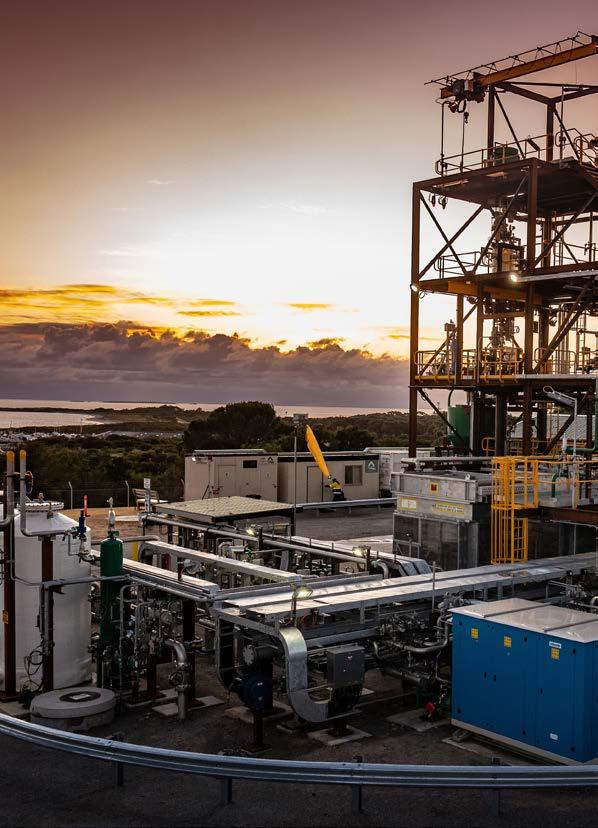
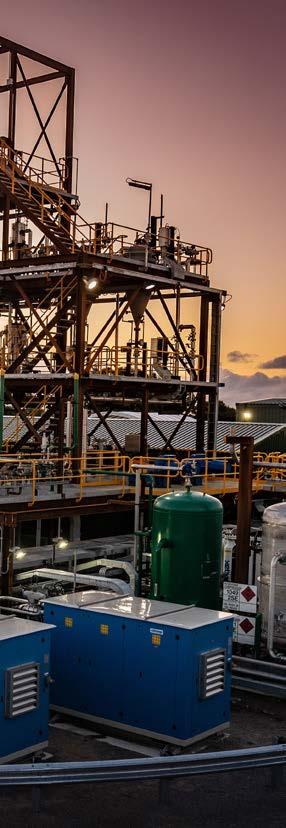
The information is provided in good faith and believed to be accurate and current at the time of publication, but this cannot be guaranteed. The State of Western Australia makes no representation, warranty or claim of any kind (express or implied) about the completeness, accuracy, reliability or suitability, with respect to the information. The reader is solely responsible for making their own assessment of the information and should make and rely on their own enquires, research and judgements in making decision affecting their own or any other persons’ interest.
To the fullest extent permitted by law, the State of Western Australia, its officers, employees, agents and representatives, shall in no way be liable, in negligence or howsoever, for any loss, damage, cost or expenses (regardless of whether the loss is direct, indirect or consequential) caused, sustained or incurred by anyone using or relying on the information, even if such information is or turns out to be wrong, incomplete, out of date or misleading.g.
This document is available in alternative formats on request for persons with accessibility requirements, please contact the Department of Jobs, Tourism, Science and Innovation.
Published by the Department of Jobs, Tourism, Science and Innovation, October 2024.
© Government of Western Australia